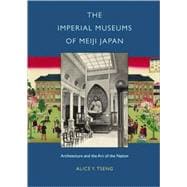
Note: Supplemental materials are not guaranteed with Rental or Used book purchases.
Purchase Benefits
What is included with this book?
| Acknowledgments | p. ix |
| Introduction | p. 3 |
| Encounters and Translations The Origins of Hakubutsukan and Bijutsu | p. 18 |
| The Museum in Ueno Park Styling the Nation | p. 39 |
| The Age of the Imperial Museum | p. 82 |
| The Imperial Kyoto Museum Locating the Past within the Present | p. 93 |
| The Imperial Nara Museum Administering History and Religion | p. 137 |
| The Hyokeikan Art Museum Debating the Permanent Place of Art | p. 171 |
| Conclusion | p. 210 |
| Appendix | p. 215 |
| Notes | p. 221 |
| Glossary | p. 257 |
| Bibliography | p. 259 |
| Index | p. 275 |
| Table of Contents provided by Ingram. All Rights Reserved. |
The New copy of this book will include any supplemental materials advertised. Please check the title of the book to determine if it should include any access cards, study guides, lab manuals, CDs, etc.
The Used, Rental and eBook copies of this book are not guaranteed to include any supplemental materials. Typically, only the book itself is included. This is true even if the title states it includes any access cards, study guides, lab manuals, CDs, etc.